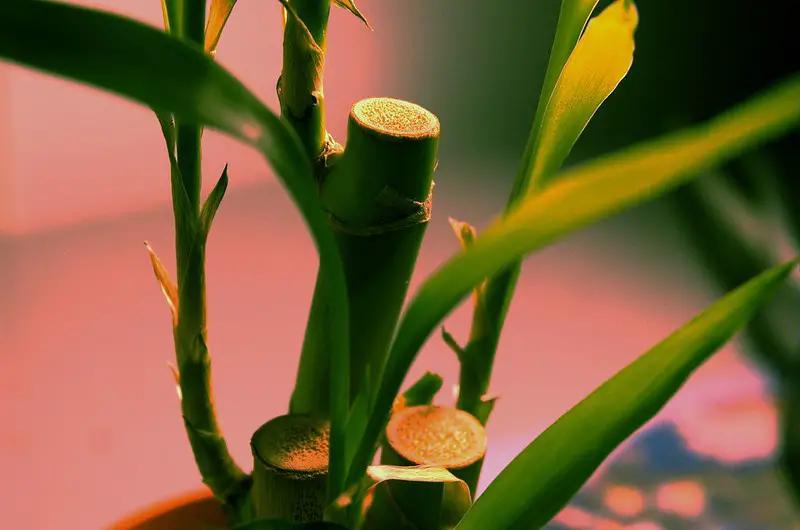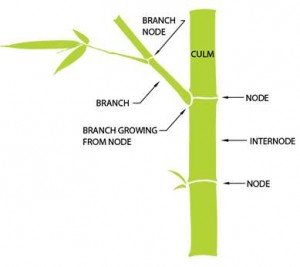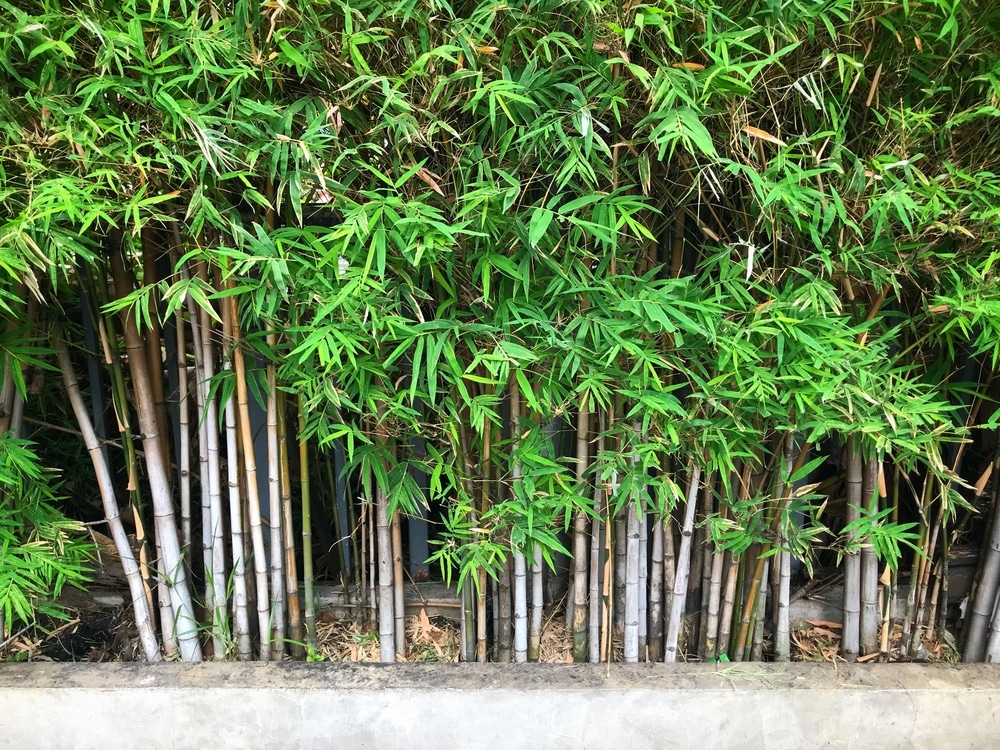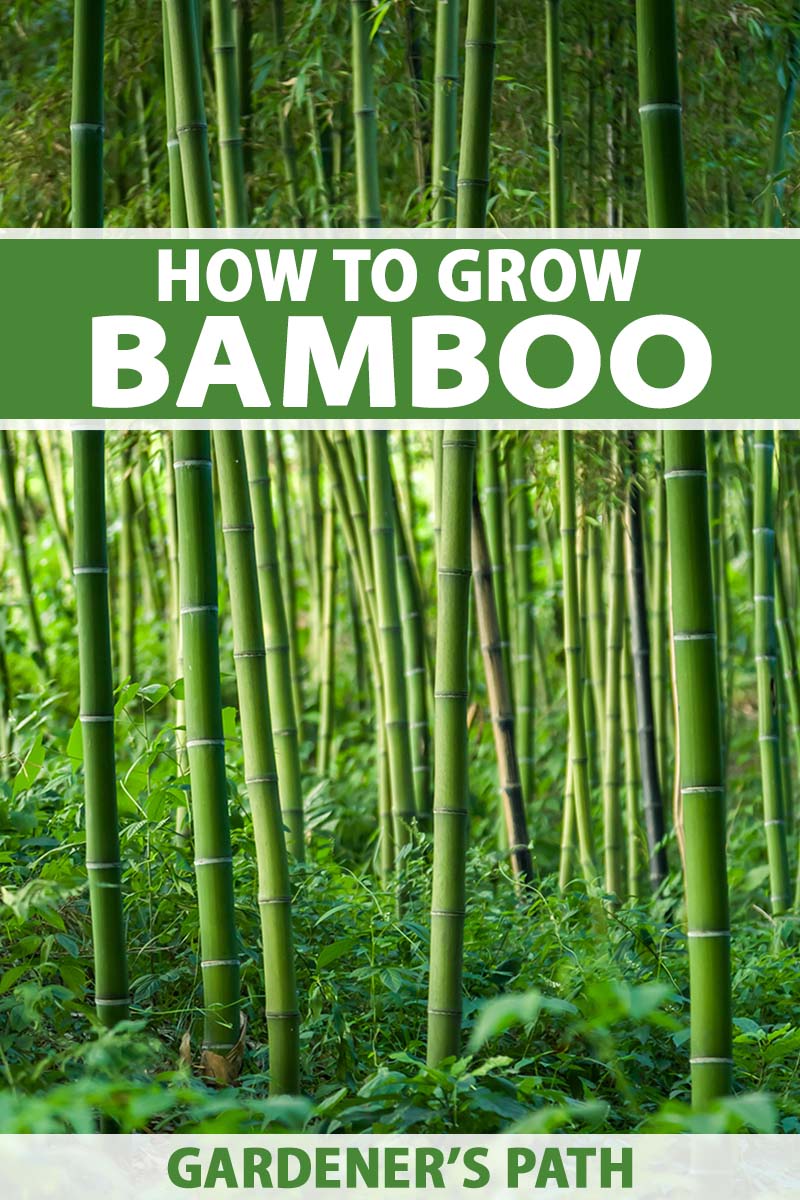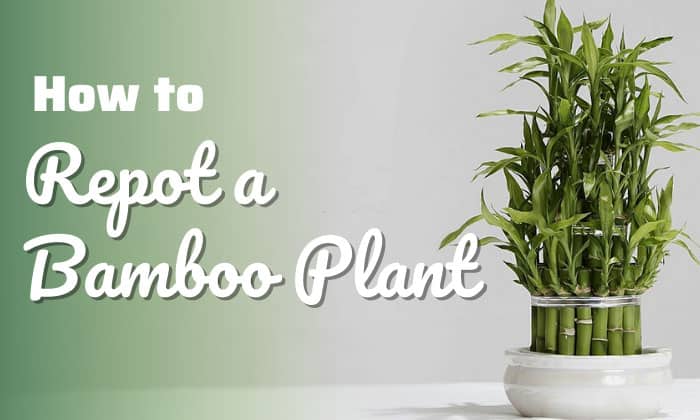Choosing the Right Bamboo Species for Your Climate
When it comes to planting bamboo, selecting the right species for your local climate is crucial for optimal growth and success. With over 1,000 species of bamboo to choose from, it can be overwhelming to decide which one to plant. However, by considering factors such as temperature, humidity, and sunlight, you can narrow down your options and choose a species that thrives in your region.
For example, if you live in a cooler climate, you may want to consider planting a species such as Fargesia or Borinda, which are known for their cold hardiness. On the other hand, if you live in a warmer climate, you may want to consider planting a species such as Bambusa or Dendrocalamus, which are known for their heat tolerance.
In addition to climate, it’s also important to consider the level of maintenance you’re willing to provide. Some bamboo species, such as running bamboo, require regular pruning and maintenance to keep them under control. Others, such as clumping bamboo, are more low-maintenance and require less upkeep.
By choosing the right bamboo species for your climate and level of maintenance, you can ensure that your bamboo plant thrives and provides you with years of enjoyment. Whether you’re looking to create a natural screen, add some texture to your garden, or simply enjoy the beauty of bamboo, selecting the right species is the first step in achieving your goals.
So, how do you go about choosing the right bamboo species for your climate? Here are a few tips to get you started:
Research different species of bamboo and their specific climate requirements. Consider factors such as temperature, humidity, and sunlight when selecting a species.
Consult with a local nursery or gardening expert to get advice on which species of bamboo grow well in your area.
Read reviews and do your research to find out which species of bamboo are known for their hardiness and low-maintenance requirements.
By following these tips, you can choose the right bamboo species for your climate and set yourself up for success when it comes to planting and caring for your bamboo plant.
Preparing the Soil for Optimal Bamboo Growth
Before planting bamboo, it’s essential to prepare the soil to create a conducive environment for optimal growth. Bamboo plants require well-draining, fertile soil that is rich in organic matter. To achieve this, you’ll need to test and amend your soil to ensure it meets the necessary requirements.
Start by testing your soil pH level, which should be between 6.0 and 7.0 for most bamboo species. You can purchase a soil testing kit or send a sample to a laboratory for analysis. Based on the results, you may need to add lime to raise the pH or sulfur to lower it.
Next, assess the soil’s nutrient content. Bamboo plants require a balanced diet of nitrogen, phosphorus, and potassium. You can add organic matter such as compost or manure to enrich the soil. Additionally, consider incorporating a slow-release fertilizer to provide a steady supply of nutrients.
Another critical aspect of soil preparation is drainage. Bamboo plants don’t like wet feet, so ensure the soil drains well to prevent waterlogged soil. You can add organic matter or perlite to improve drainage and aeration.
When preparing the soil, it’s also essential to remove any debris, rocks, or weeds that can compete with the bamboo plant for water and nutrients. Till the soil to a depth of 12-18 inches to loosen and aerate it.
By following these steps, you can create a well-prepared soil that will support the healthy growth of your bamboo plant. Remember, a well-prepared soil is crucial for the success of your bamboo planting project.
Here are some additional tips to keep in mind when preparing the soil for bamboo planting:
Use a mix of compost and topsoil to create a nutrient-rich soil blend.
Avoid using fresh manure, as it can burn the roots of the bamboo plant.
Consider incorporating a soil conditioner to improve soil structure and fertility.
Test the soil regularly to ensure it remains within the optimal pH range for bamboo growth.
By following these tips and preparing the soil properly, you’ll be well on your way to creating a thriving bamboo plant that will provide you with years of enjoyment.
How to Plant Bamboo: A Step-by-Step Process
Planting bamboo can be a straightforward process if you follow the right steps. Here’s a step-by-step guide on how to plant bamboo, including information on planting depth, spacing, and watering requirements.
Step 1: Prepare the Planting Site
Before planting, make sure the site is clear of any debris, rocks, or weeds. If you’re planting in a container, choose a container that is at least 12-18 inches deep and has drainage holes to prevent waterlogged soil.
Step 2: Dig the Planting Hole
Dig a hole that is twice as wide and just as deep as the bamboo plant’s root ball. If you’re planting multiple bamboo plants, space them 3-5 feet apart, depending on the variety.
Step 3: Remove the Bamboo Plant from its Container
Gently remove the bamboo plant from its container, taking care not to damage the roots. If the roots are wrapped in burlap, remove the burlap and any string or wire that holds it in place.
Step 4: Place the Bamboo Plant in the Planting Hole
Place the bamboo plant in the planting hole, making sure the crown (where the stem meets the roots) is level with the soil surface. If you’re planting in a container, make sure the crown is above the soil surface.
Step 5: Fill in the Planting Hole
Fill in the planting hole with a mix of soil and organic matter, such as compost or well-rotted manure. Make sure the soil is firmly packed around the roots to prevent settling.
Step 6: Water the Bamboo Plant
Water the bamboo plant thoroughly after planting, and continue to keep the soil consistently moist during the first growing season. Reduce watering in subsequent years, but make sure the soil doesn’t dry out completely.
By following these steps, you can successfully plant your bamboo and enjoy its many benefits. Remember to provide your bamboo plant with the right growing conditions, including sunlight, temperature, and humidity, to ensure optimal growth and health.
Here are some additional tips to keep in mind when planting bamboo:
Plant bamboo in the spring or fall, when the weather is cooler, to reduce transplant shock.
Use a high-quality potting mix specifically designed for bamboo plants.
Avoid planting bamboo in areas with standing water or where water tends to collect.
Consider using a bamboo plant with a built-in root barrier to prevent invasive growth.
Caring for Your Newly Planted Bamboo
Caring for your newly planted bamboo is crucial to ensure its healthy growth and development. With proper care, your bamboo plant can thrive and provide you with years of enjoyment. Here are some tips and advice on how to care for your newly planted bamboo:
Fertilization
Bamboo plants require regular fertilization to promote healthy growth. Use a balanced fertilizer that is high in nitrogen, phosphorus, and potassium. Apply the fertilizer according to the manufacturer’s instructions, and avoid over-fertilizing, which can damage the plant.
Pruning
Pruning is an essential part of bamboo care. Remove any dead or damaged culms (stems) to maintain the plant’s appearance and promote healthy growth. Use a sharp, clean pruning tool to avoid spreading diseases. Prune your bamboo plant in the spring or fall, when the plant is dormant.
Pest Management
Check your bamboo plant regularly for pests, such as aphids, spider mites, and scale. Use organic pest control methods whenever possible, such as neem oil or insecticidal soap. Avoid using chemical pesticides, which can harm the plant and the environment.
Watering
Bamboo plants require consistent moisture, especially during the first growing season. Water your bamboo plant regularly, but avoid overwatering, which can lead to root rot. Check the soil moisture by inserting your finger into the soil up to the first knuckle. If the soil feels dry, it’s time to water.
Mulching
Mulching around the base of your bamboo plant can help retain moisture, suppress weeds, and regulate soil temperature. Use a thick layer of organic mulch, such as wood chips or bark, and keep it a few inches away from the plant’s crown.
By following these care tips, you can ensure your newly planted bamboo thrives and provides you with years of enjoyment. Remember to monitor your plant’s health regularly and take action promptly if you notice any problems.
Here are some additional tips to keep in mind when caring for your newly planted bamboo:
Keep the area around the plant weed-free to prevent competition for water and nutrients.
Avoid exposing your bamboo plant to extreme temperatures, such as frost or heatwaves.
Use a bamboo plant with a built-in root barrier to prevent invasive growth.
Consider using a drip irrigation system to deliver water directly to the roots of the plant.
Common Mistakes to Avoid When Planting Bamboo
Planting bamboo can be a rewarding experience, but it’s not without its challenges. Many people make common mistakes when planting bamboo, which can lead to poor growth, disease, and even death. Here are some common mistakes to avoid when planting bamboo:
Incorrect Soil Preparation
One of the most common mistakes people make when planting bamboo is not preparing the soil properly. Bamboo plants require well-draining, fertile soil that is rich in organic matter. If the soil is not prepared correctly, the bamboo plant may not receive the necessary nutrients and water, leading to poor growth.
Insufficient Planting Depth
Another common mistake is not planting the bamboo deep enough. Bamboo plants require a deep planting depth to establish a strong root system. If the plant is not planted deep enough, it may not receive enough water and nutrients, leading to poor growth.
Overwatering
Overwatering is a common mistake that can be detrimental to bamboo plants. Bamboo plants require consistent moisture, but overwatering can lead to root rot and other problems. Make sure to check the soil moisture regularly and avoid watering the plant too much.
Incorrect Spacing
Incorrect spacing is another common mistake that can lead to problems with bamboo plants. Bamboo plants require adequate space to grow and spread out. If the plants are too close together, they may compete for water and nutrients, leading to poor growth.
Not Providing Enough Sunlight
Bamboo plants require adequate sunlight to grow and thrive. If the plant is not receiving enough sunlight, it may not produce enough chlorophyll, leading to poor growth.
Not Mulching Around the Plant
Mulching around the bamboo plant is essential to retain moisture, suppress weeds, and regulate soil temperature. If the plant is not mulched, it may not receive the necessary benefits, leading to poor growth.
By avoiding these common mistakes, you can ensure that your bamboo plant grows and thrives. Remember to always follow the specific instructions for the type of bamboo you are planting, and don’t hesitate to seek advice from a professional if you’re unsure.
Here are some additional tips to keep in mind when planting bamboo:
Use a high-quality bamboo plant that is specifically designed for your climate and region.
Avoid planting bamboo in areas with standing water or where water tends to collect.
Consider using a bamboo plant with a built-in root barrier to prevent invasive growth.
Monitor your plant’s health regularly and take action promptly if you notice any problems.
Creating a Bamboo-Friendly Environment
Creating a bamboo-friendly environment is crucial for the healthy growth and development of your bamboo plant. Bamboo plants require specific conditions to thrive, including sunlight, temperature, and humidity. Here are some tips on how to create a bamboo-friendly environment:
Sunlight Requirements
Bamboo plants require partial shade to full sun, depending on the species. Make sure to choose a location that receives the right amount of sunlight for your bamboo plant. If you’re planting in a container, consider moving it to a location that receives more sunlight during the day.
Temperature Requirements
Bamboo plants prefer temperatures between 65°F and 75°F (18°C and 24°C). Avoid planting in areas with extreme temperatures, such as near heating vents or drafty windows. If you live in an area with cold winters, consider bringing your bamboo plant indoors during the winter months.
Humidity Requirements
Bamboo plants prefer high humidity, typically above 50%. You can increase the humidity around your bamboo plant by placing it on a tray filled with water and pebbles or using a humidifier. Avoid placing your bamboo plant near heating vents or air conditioning units, which can dry out the air.
Soil Requirements
Bamboo plants prefer well-draining soil that is rich in organic matter. Make sure to use a high-quality potting mix specifically designed for bamboo plants. Avoid using regular potting soil, which can retain too much water and cause root rot.
Wind Protection
Bamboo plants can be sensitive to wind, which can cause damage to the leaves and stems. If you live in a windy area, consider planting your bamboo in a location that provides some wind protection, such as near a building or a group of trees.
By creating a bamboo-friendly environment, you can ensure that your bamboo plant grows and thrives. Remember to monitor your plant’s health regularly and take action promptly if you notice any problems.
Here are some additional tips to keep in mind when creating a bamboo-friendly environment:
Use a bamboo plant with a built-in root barrier to prevent invasive growth.
Avoid planting bamboo in areas with standing water or where water tends to collect.
Consider using a drip irrigation system to deliver water directly to the roots of the plant.
Monitor your plant’s health regularly and take action promptly if you notice any problems.
Pruning and Maintaining Your Bamboo Plant
Pruning and maintaining your bamboo plant is essential for its healthy growth and development. Pruning helps to control the size and shape of the plant, promotes new growth, and removes dead or damaged culms. Here are some tips on how to prune and maintain your bamboo plant:
Why Prune Bamboo?
Pruning bamboo is necessary to maintain its health and appearance. Bamboo plants can grow quite large, and pruning helps to control their size and shape. Pruning also promotes new growth, which can help to increase the plant’s density and vigor.
When to Prune Bamboo
The best time to prune bamboo is in the spring or fall, when the plant is dormant. Avoid pruning in the summer, when the plant is actively growing, as this can cause stress and lead to disease or pest problems.
How to Prune Bamboo
Pruning bamboo is a relatively simple process. Start by removing any dead or damaged culms, as these can provide a habitat for pests and diseases. Next, cut back any overgrown or leggy culms to the desired height. Use a sharp, clean pruning tool to avoid spreading diseases.
Dividing and Propagating Bamboo
Dividing and propagating bamboo is a great way to share plants with friends and family, or to create new plants for your own garden. To divide bamboo, simply dig up the entire plant, and separate the rhizomes (underground stems) into sections. Replant the sections in a new location, and water well.
Tips for Pruning and Maintaining Bamboo
Here are some additional tips for pruning and maintaining your bamboo plant:
Use a high-quality pruning tool to avoid damaging the plant.
Make clean cuts, just above a node (where a branch meets the stem).
Avoid pruning too much of the plant at once, as this can cause stress.
Monitor your plant’s health regularly, and take action promptly if you notice any problems.
By following these tips, you can keep your bamboo plant healthy and thriving. Remember to prune and maintain your plant regularly, and enjoy the many benefits that bamboo has to offer.
Troubleshooting Common Bamboo Plant Problems
Despite proper care and maintenance, bamboo plants can still encounter problems. Here are some common issues that may arise when growing bamboo, along with advice on how to troubleshoot and resolve them:
Pests
Bamboo plants can be susceptible to pests such as aphids, spider mites, and scale. To control pest infestations, use organic pest control methods such as neem oil or insecticidal soap. Avoid using chemical pesticides, which can harm the plant and the environment.
Diseases
Bamboo plants can be prone to diseases such as root rot, leaf spot, and powdery mildew. To prevent disease, ensure good air circulation, water carefully, and avoid over-fertilizing. If disease does occur, treat the plant with a fungicide specifically designed for bamboo.
Nutrient Deficiencies
Bamboo plants require a balanced diet of nutrients to grow and thrive. If the plant is not receiving enough nutrients, it may exhibit symptoms such as yellowing leaves or stunted growth. To address nutrient deficiencies, fertilize the plant with a balanced fertilizer specifically designed for bamboo.
Environmental Stress
Bamboo plants can be sensitive to environmental stressors such as extreme temperatures, drought, and wind. To mitigate environmental stress, provide the plant with protection from extreme weather conditions, and ensure it receives adequate water and nutrients.
Tips for Troubleshooting Bamboo Plant Problems
Here are some additional tips for troubleshooting common bamboo plant problems:
Monitor your plant’s health regularly, and take action promptly if you notice any problems.
Keep a record of your plant’s care and maintenance, including fertilization, pruning, and pest control.
Consult with a professional if you are unsure of how to address a particular problem.
Consider using a bamboo plant with a built-in root barrier to prevent invasive growth.
By following these tips, you can troubleshoot common problems that may arise when growing bamboo, and ensure your plant remains healthy and thriving.


